#indian wigwam in lower canada
Photo

Indian Wigwam in Lower Canada (1848) By Cornelius David Krieghoff (1815–1872)
Title : Indian Wigwam in Lower Canada. Medium lithograph with watercolor on wove paper. Date : 1848
Current Location : National Gallery of Canada, Ottawa, Canada.
#indian wigwam in lower canada#cornelius krieghoff#landscape art#canadian life art#paintings#art#19th century art
18 notes
·
View notes
Text
𝕬 𝖕𝖗𝖎𝖒𝖎𝖙𝖎𝖛𝖊 𝖜𝖔𝖗𝖑𝖉
Definition/Understanding → Research → Comparison/Reflection → Narrative & Character
A question that has kept occurring in my head whenever “primitive” has been mentioned is, what exactly is it? What is a primitive world? What makes it primitive- and what does it look like?
When I think of a ‘primitive world’, I immediately start thinking of the early stages of civilisation; primitive civilisation.

Source: ScienceDirect.com - International Encyclopedia of the Social & Behavioral Sciences, reference work
In International Encyclopedia of the Social & Behavioral Sciences (Second Edition), 2001, written by Alexander F. Robertson, he describes “Primitive” as following;
“‘Primitive’ is a term from the evolutionary vocabulary of the nineteenth century that in popular understanding still identifies the interests of the modern discipline of anthropology. Anthropologists have sought to come to respectful terms with their ‘Primitive’ subject matter by redefining it in terms of a distinctive social structure, culture, spatial distribution, and type of livelihood. But despite efforts to set aside disparaging contrasts between primitive society and modern civilisation, evolutionary assumptions about human progress remain embedded in both scientific and humanistic approaches to society.”
When reading this, I was intrigued by the idea of how we as a society choose to interpret and understand the word; [primitive]. The way that it’s a modern way of understanding something ancient, as if we are looking back at something through a veil, based on the fact that we are so far and ahead from our ancestors, in an evolutionary sense, that we define them by what tools they used. (ex. stone age)
Further, Alexander F. Robertson also describes “Primitive Society” as such;
“In popular usage, ‘primitive society’ distinguishes ourselves from other people who have made little progress toward what we understand as civilization. There are very few such people left today: they live in scattered communities in deserts or rainforests, and they interest us mainly because we think of them as the living relics of our own distant ancestors. The comparison is usually unflattering. Until the beginning of the nineteenth century ‘primitive’ simply meant ‘first’ or ‘earliest,’ but as the word was applied to the original inhabitants of territories colonised by European and American states, it acquired the connotations of inferior, backward, rude.”
As for when I reflected upon his first quote, this sort of applies to this second quote. I find it incredibly interesting to think about the way in which not only us as the more modern society, but also how the societies prior to ours have interpreted this. The idea of something being the “first” and the “earliest” appearance of mankind; How that later was used against the people, using their way of living as an insult of them being “lesser”.
Early civilisations research:
Identify the variety of early civilisations → Choose two → Time, where, what defined their way of living – remember to add visuals!
With a clearer understanding of what exactly a ’primitive world’ is based upon, I can’t help but want to look into the word “civilisation”. What ancient civilisations exist and what traces of their existence have their left behind?
One of the obvious ones that immediately comes to mind are the Egyptians. They were an ancient civilisation, located in Egypt by the banks of the Nile. Their time of rule being 3150 BC – 30 BC (according to the conventional Egyptian chronology). They are said to have had a political understanding of their society, referred to as “Upper” and “Lower Egypt” under the first pharaoh. Though this was only possible because there were already settlers around the Nile banks and valley around 3500 BC. Their civilisation was rich, well known for their prodigious culture and their architecture, especially the pyramids and Sphinx.
They had a wide variety of things that defined their culture and way of living; this can be seen in the way that they made mummies which preserved ancient pharaohs and other important figures of the time to this very day. Hieroglyphs not only tells stories of their age and time, but also shows how their language was developed and used.
Tutankhamun’s Mask:

Narmer Palette:
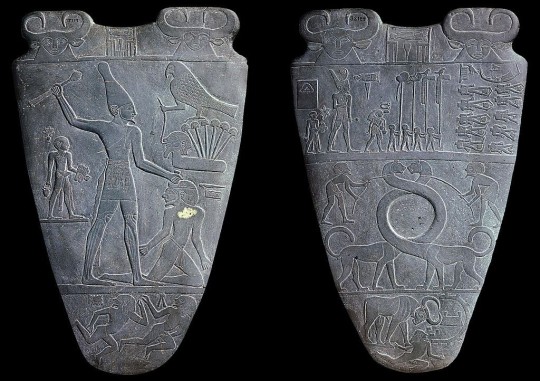
Another ancient civilisation that came to my mind was the Maya Indians. I have researched them in the past for a written school project, so I already know a good amount about their culture.
The ancient Maya civilisation planted their roots in Central America at around 2600 BC – 900 AD. Once they had established themselves in present-day Yucatan, Mexico, they proceeded to prosper and become a sophisticated folk. By 700 BC, they Mayans had developed their own system of writing which they then used to create calendars of the solar system, all carved into stone.
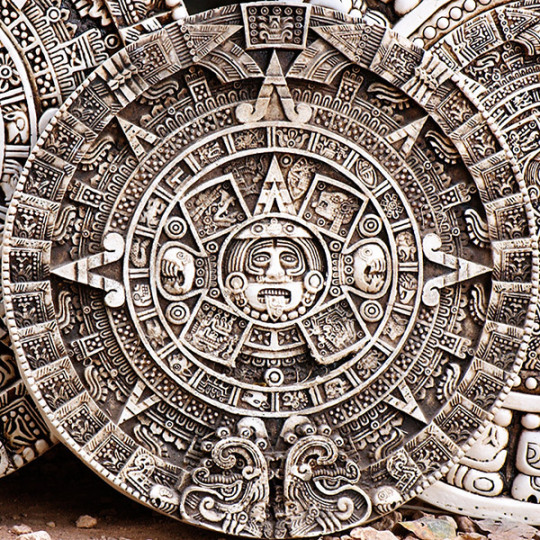
According to the Mayans, the world was created on August 11, 3114 BC (the date of which their calendar begins), and the supposed end date was December 21, 2012.
This ancient civilisation was incredibly rich compared to many other civilisations of the time. They built pyramids, much like the Egyptians, but some of their buildings were even much larger than the pyramids.
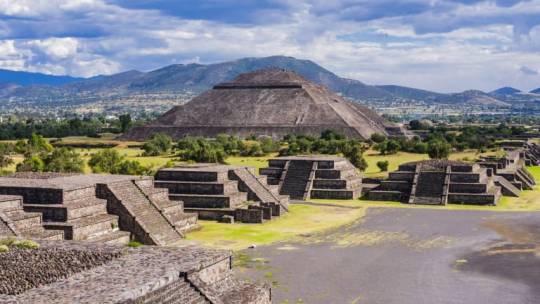
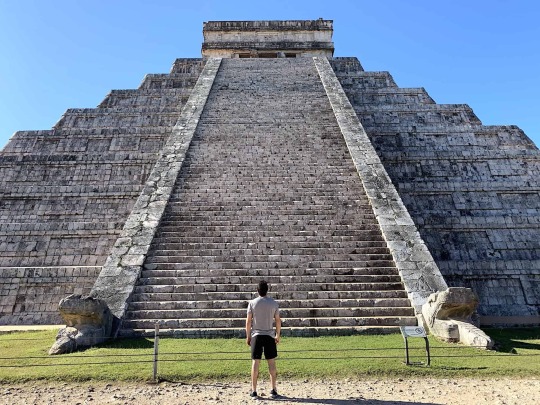
It is still a complete mystery what happened to the Maya Indians. Their population suddenly began to rapidly decline. Why did the Mayans, a highly sophisticated and developed civilisation made up of more than 19 million people, suddenly collapse and disappear during the eighth or ninth century? What happened to them?. Despite this, there are still descendants of the Mayans that live in the central parts of America to this day.
From the last brief, we looked at a lot of narrative based things such as mythologies and folklores. One of the things I stumbled upon was the origin of the myth and folklore about the creature; wendigo. I didn’t further look into this, but this reminded me of it.
The folklore originates from the Native Americans, more specifically the tribe that goes by the name of “Algonquin”. The Algonquin people are natives from Canada and this folk lived and still to this day, live around parts of western Quebec and Ontario, centering themselves around the Ottawa River. Like the Mayans, there are still people identified as having Algonquin ancestry. (from 2016, 40,880 people).
- The Algonquin people have been known by various Europeans since 1603, first encountered by Samuel de Champlain.
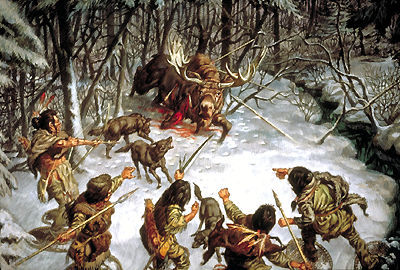
Moose Hunt, artwork by Lewis Parker

Algonquin Canoe, artwork by Lewis Parker
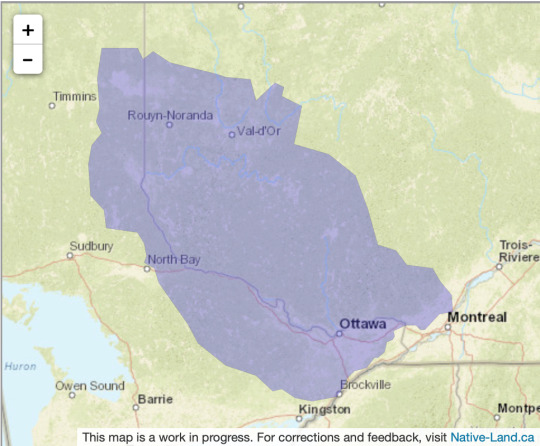
Algonquin traditional territory
The Algonquin hunted, traded and lived in large areas of territories in the Eastern Woodlands Subarctic regions, being independent of one another. Like some of their relatives, the Algonquin used to live in disassembled birch bark dwellings, known better as wigwams.



They lives in communities where clans were represented by totems based on different animals such as crane, wolf, bear, loon etc. The clans had incorporated leadership provided by elders which were highly respected within each clan. Intermarriage within a clan was not permitted, even if the people were from different communities all-together.
Their language was known as Omàmiwininìmowin, which is part of the Algonquian language family. The root of this word is Omàmiwininì, which is often used by the community to describe Algonquin people overall.
Within the Algonquin language family are a wide variety of different languages such as Atikamekw, Blackfoot, Cree, Wolastoqiyik, Mi’kmaq, Innu, Naskapi, Ojibwe and Oji-Cree. Within all of these mentioned, the Algonquian language group was the language mostly spoken in Canada, with around 175,825 speakers. The majority of these speakers reside in;
Manitoba (21.7%)
the rest live in;
Quebec (21.2%)
Ontario (17.2%)
Alberta (16.7%)
Saskatchewan (16.0%)
Despite the language being quiet widespread amongst the clans/tribes, it is considered endangered today. Only 1,575 people identify the language as their mother tongue. Algonquin communities work hard to promote and preserve their language and culture through various different programs, such as language courses.
The Algonquin language is often linked to different names of places in Canada, with the reason being that many early French explorer mapped and thereby named features with Algonquin words. Ex. Quebec comes from the Algonquin word kébec, which actually means “place where the river narrows”.
𝖂𝖊𝖓𝖉𝖎𝖌𝖔
The original tale of the wendigo talks about a lost hunter that, during a cold winter, reached intense hunger which drove him to cannibalism to survive. After he had been feasting upon another humans’ flesh, he transformed, his body changing and becoming a humanlike-beast of the wilderness on the hunt for more human flesh to feast upon.
As mentioned earlier, this story originates from the Algonquin people. The details vary rapidly depending on who you ask, as most folklore and tales do. Some people that claim they have encountered this creature say it’s related to Bigfoot, but on the other end of the spectrum, some compare it too werewolves.
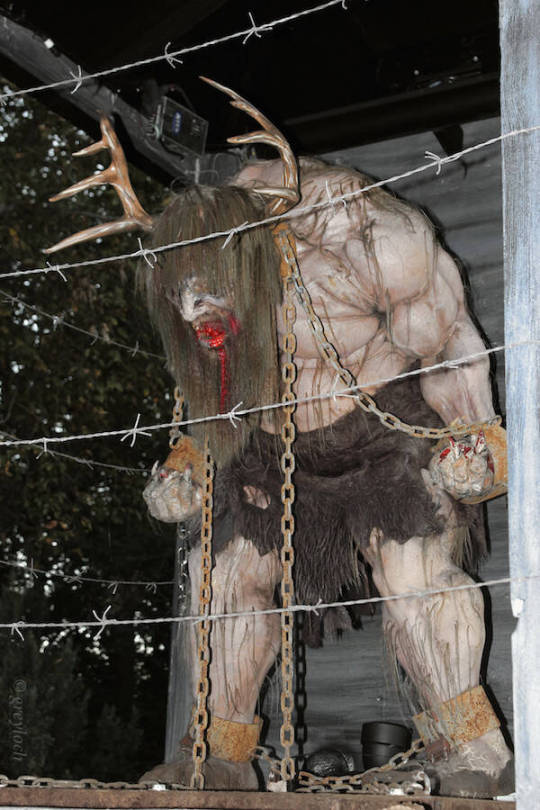
An animatronic depiction of a wendigo in a cage on display in “Wendigo Woods” in Busch Gardens Williamsburg, a theme park located in New France.
The mythological create that is the Wendigo is said to be a creature thriving in cold environments, supporting the fact that most of the many sightings of them have been reported in Canada and also the colder states to the North such as Minnesota. Around the turn of the 20th century, tribes people form the Algonquian tribe claimed that the disappearances of people is down the wendigos’ attacking them.
The wendigo is said to be around 15 feet tall (4.57 m.), the body often described as being skeletal or emaciated. A theory on this says that the creature is never satisfied with its cannibalistic urges and kills, obsessively hunting for new human victims and stuck being forever hungry.

Picture of Basil H. Johnston.
A Native author and ethnographer named Basil H. Johnston has described the Wendigo in his book The Manitous as:
“The Wendigo was gaunt to the point of emaciation, its desiccated skin pulled tightly over its bones. With its bones pushing out over its skin, its complexion the ash gray of death, and its eyes pushed back deep into the sockets, the Wendigo looked like a gaunt skeleton recently disinterred from the grave. What lips it had were tattered and bloody… Unclean and suffering from suppurations of the flesh, the Wendigo gave off a strange and eerie odor of decay and decomposition, of death and corruption.”
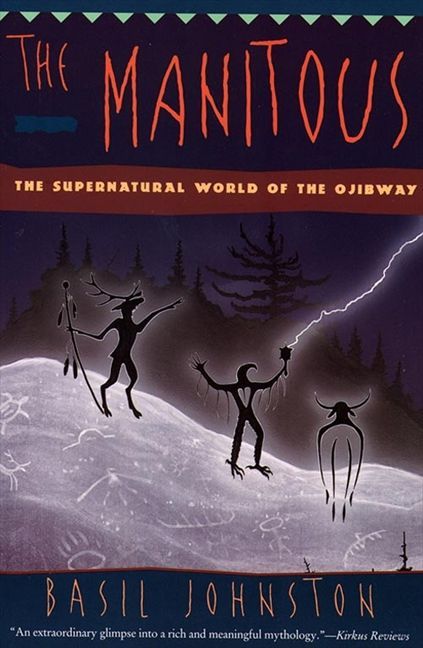
The front cover of Basil H. Johnstons’ book The Manitous, published 1995.
According to Nathan Carlson, an ethno-historian, it has also been said that the deadly cannibalistic creature has large, razor sharp claws and massive eyes, much like and owl. But some people prefer to describe it (the wendigo) as a skeleton-like with skin in the colour of ash. But no matter which version of the wendigo’s appearance seems the most accurate and possible, it is most obviously not a creature you’d want to run into anywhere in the wild.
Another thing that I found quite interesting about the Native Americans in general was the way that their belief reached a spiritual level (spirit animals, animal totems etc.). I did some digging when looking into Animal Totems and sacred Spirit Animals in Native American belief;
According to this website (Legends Of America, Exploring history, destinations, people, & legends of this great country since 2003.), there is a huge list of different animals involved with the Native belief. A totem (a spirit being) is considered a sacred object or a symbol for a clan, tribe, family or even just an individual. Some tribes and their traditions proves that each person is somehow connected with nine different animals, also known as spirit guides or power animals, that will accompany the person through their life. Each animal represents something different, meaning that they move in and out of ones life, depending on what path or direction you take in life and the journey.
The same tribes also believe that totem animals is one that i always with you in your life, physically and spiritually. In other words, the totem animal that you are given acts as the main guardian of all your spirits. With this animal, a connection is shared and created, either through an interest in the said animal, the characteristics, dreams or other interactions (ie. with the animal in the physical world).
Because the list is quite long, the entirety of it can be found here.

Restored Piasa Bird carving, located along the Mississippi River, near llinois River.
Sources:
thecanadianencyclopedia.ca “The Canadian Encyclopedia, Algonquin”
allthatsinteresting.com “The Native American Legend Of The Wendigo — The Frostbitten Monster Of Your Nightmares By; All That's Interesting”
legendsofamerica.com “Exploring history, destinations, people, & legends of this great country since 2003.”
From studying these different early periods of civilisation, I have decided to choose just two of them to inspire my diorama; Mayans (the fact and idea that this blossoming civilisation suddenly disappeared without a trace as to tell why) and Native Americans (most specifically the Algonquin tribe and their folklore).
0 notes
Text
Tipi là gì
Tipi
[[File:Oglala girl in front of a tipi2.jpg|thumb|250px|An [[Oglala Lakota]] tipi, 1891]] A ”’tipi”’ (also ”’teepee”’[http://en.wiktionary.org/w/index.php?title=teepee&oldid=21764460 Teepee], en.wiktionary.org (last visited August 25, 2013). “[http://www.dict.org/bin/Dict?Database=*&Form=Dict1&Strategy=*&Query=teepee teepee]”. www.dict.org.(last visited August 25, 2013). And rarely, “tepee” [http://www.britannica.com/EBchecked/topic/587697/tepee tepee] (dwelling) — Encyclopædia Britannica) is a cone-shaped tent, traditionally made of animal skins upon wooden poles. Modern tipis usually have a canvas covering. last2 = Laubin A tipi is distinguished from other conical tents by the smoke flaps at the top of the structure.Holley, Linda A. ”Tipis-Tepees-Teepees: History and Design of the Cloth Tipi.”The American Antiquarian and Oriental Journal, Volume 24. Edited by [[Stephen Denison Peet]]. [https://books.google.com/books?id=XEPzAAAAMAAJ&pg=PA253 p253]History of Dakota Territory, Volume 1. By [[George Washington Kingsbury]]. S.J. Clarke Publishing Company, 1915. [https://books.google.com/books?id=sXBEAQAAIAAJ&pg=PA147 p147] Historically, the tipi has been used by [[Indigenous peoples of the Americas|Indigenous people]] of the [[Plains Indians|Plains]] in the [[Great Plains]] and [[Canadian Prairies]] of [[North America]]. They are still in use in these communities, though now primarily for ceremonial purposes rather than daily living. A similar structure, the ”[[lavvu]]” is used by the [[Sámi people]] of northern Europe.The People of Tipi Sapa (the Dakotas): Tipi Sapa Mitaoyate Kin. By [[Sarah Emilia Olden]]. Morehouse Publishing Company, 1918. [https://books.google.com/books?id=0AETAAAAYAAJ&pg=PA25 p25]Guide to the museum, first floor. By [[Museum of the American Indian]], [[Heye Foundation]]. 1922. [https://books.google.com/books?id=FF3zAAAAMAAJ&pg=PA105 p105]Geological Survey Professional Paper, Volume 670. U.S. Government Printing Office, 1969. [https://books.google.com/books?id=rSolAQAAIAAJ&pg=PA21 p21] Tipis are often [[Stereotypes about indigenous peoples of North America|stereotypically and incorrectly]] associated with all [[Native Americans in the United States]] and [[Indigenous peoples in Canada]], despite their usage being unique to the peoples of the Plains.publisher=HarperCollins Native American [[tribe (Native American)|tribe]]s and [[First Nations|First Nation]] [[band government]]s from other regions have used other types of [[dwelling]]s.[[Lewis H. Morgan]], “I have seen it in use among seven or eight [[Sioux|Dakota]] sub-tribes, among the [[Iowa people|Iowas]], [[Otoes]], and [[Pawnees]], and among the [[Piegan Blackfeet|Black-feet]], [[Crow Nation|Crows]], [[Assiniboines]], and [[Plains Cree|Cree]]s. In 1878, I saw it in use among the [[Ute people|Utes]] of Colorado. A collection of fifty of these tents, which would accommodate five hundred persons, make a picturesque appearance. Under the name of the “[[Sibley tent]]” it is now in use, with some modifications of plan, in the [[United States Army]], for service on the plains.” [A Sibley tent has one pole in the center and no flaps for guiding the smoke from the central fire.] (Contributions to N. A. Ethnology, vol. iv., p. 115.) The tipi is durable,Annual Reports, Volume 17, Part 1. 1898. [https://books.google.com/books?id=f9sRAAAAYAAJ&pg=PA405 p405] provides warmth and comfort in winter,“[https://books.google.com/books?id=titLAAAAYAAJ&pg=PA99 Shelter]”. Anthropological Papers of the American Museum of Natural History, Volumes 5-6. Published by order of the trustees, 1910. [https://books.google.com/books?id=titLAAAAYAAJ&pg=PA115 p115] is cool in the heat of summer,With the sides raised; As seen in: Anthropological papers. 1917. [https://books.google.com/books?id=RE5SAQAAIAAJ&pg=PA211 p211] and is dry during heavy rains.The tipi: a center of native American life. By [[David Yue]], [[Charlotte Yue]]. 1984. p15.Camping and Camp Outfits: A Manual of Instruction for Young and Old Sportsmen. By [[George O. Shields]]. Rand, McNally, 1890. [https://books.google.com/books?id=sZQCAAAAYAAJ&pg=PA43 p43] Tipis can be disassembled and packed away quickly when people need to relocate and can be reconstructed quickly upon settling in a new area.The North-Americans of yesterday. By [[Frederick Samuel Dellenbaugh]]. G.P. Putnam’s Sons, 1900. [https://books.google.com/books?id=L1KUlwDIhX4C&pg=PA204 p204][[Lewis H. Morgan]], “[http://www.gutenberg.org/ebooks/8112 Houses and House Life of the American Aborigines],” Contributions to N. A. Ethnology, vol. iv., p. 114.[[Lewis H. Morgan]] notes the Dakota call their skin tents, “wii-ka-yo”. The following is an extract of his text:
“When first discovered the Dakotas lived in houses constructed with a frame of poles and covered with bark, each of which was large enough for several families. They dwelt principally in villages in their original area on the head-waters of the Mississippi, the present State of Minnesota. Forced upon the plains by an advancing white population, but after they had become possessed of horses, they invented a skin tent eminently adapted to their present nomadic condition. It is superior to any other in use among the American aborigines from its roominess, its portable character, and the facility with which it can be erected and struck. “[…]” When the tent is struck, the poles are attached to a horse, half on each side, like thills, secured to the horse’s neck at one end, and the other dragging on the ground. The skin-covering and other camp-equipage are packed upon other horses and even upon their dogs, and are thus transported from place to place on the plains. This tent is so well adapted to their mode of life that it has spread far and wide among the Indian tribes of the prairie region.” (Contributions to N. A. Ethnology, vol. iv., p. 114.) Historically, this portability was important to [[Plains Indians]] with their at-times [[nomad]]ic lifestyle.[https://books.google.com/books?id=h9clAAAAMAAJ North American Indians of the Plains]. By [[Clark Wissler]]. American Museum of Natural History, 1920. == Etymology and nomenclature == The word ”tipi” comes into English from the [[Lakota language]].last2=Porterfield The Lakota word ”thípi” means “a dwelling” or “they dwell”, from the verb ”thí”, meaning “to dwell”.pages= The [[wigwam]] or “wickiup”, a dome-shaped shelter typically made of bark layered on a pole-structure, was also used by various tribes, especially for hunting camps.[https://books.google.com/books?id=HjSXKyZ2HOgC&pg=PA76 ”[[The Mythology of All Races]]”]. 1916. p. 76.The Archeological History of New York, Issues 231-238. By [[Arthur Caswell Parker]]. University of the State of New York, 1922. [https://books.google.com/books?id=T0qESR8QbowC&pg=PA387 p387] The term ”wigwam” has often been incorrectly used to refer to a conical skin tipi.The North-Americans of yesterday. By [[Frederick Samuel Dellenbaugh]]. G.P. Putnam’s Sons, 1900. [https://books.google.com/books?id=L1KUlwDIhX4C&pg=PA200 p200]Usually wigwams are a domed structure; conical wooden wigwams are known (as seen [[:File:Wigwam Indigenous peoples.JPG|here]] in the background), though, and presumably gave rise to the confusing of the different structures. For more, see: Notes on the Eastern Cree and Northern Saulteaux, Volumes 9-10. By [[Alanson Skinner (Anthropologist)|Alanson Skinner]]. The Trustee, 1911. [https://books.google.com/books?id=5Q8TAAAAYAAJ&pg=PA12 p12]+13. == Types and utility == === Structure === [[File:Tipi Inside.png|thumb|[[Crow Nation|Crow]] lodge interior, 1907, showing the poles and outer skin at the top, the inner lining and bedding. The lashing rope is tied off to a wooden stake at the bottom of the photograph. Clothing is suspended on a line tied between two of the tipi poles.]] A typical family tipi is a conical, portable structure with two adjustable smoke flaps, multiple poles (historically from 12 to 25 feet long) called lodge poles. [[Lewis H. Morgan]] noted that,
The frame consists of thirteen poles from fifteen to eighteen feet in length, which, after being tied together at the small ends, are raised upright with a twist so as to cross the poles above the fastening. They are then drawn apart at the large ends and adjusted upon the ground in the rim of a circle usually ten feet in diameter. A number of untanned and tanned buffalo skins, stitched together in a form adjustable to the frame, are drawn around it and lashed together, as shown in the figure. The lower edges are secured to the ground with tent-pins. At the top there is an extra skin adjusted as a collar, so as to be open on the windward side to facilitate the exit of the smoke. A low opening is left for a doorway, which is covered with an extra skin used as a drop. The fire-pit and arrangements for beds are the same as in the Ojibwa lodge, grass being used in the place of spruce or hemlock twigs.Morgan, Lewis H., ”Contributions to Native American Ethnology”, vol. iv., p. 114.
[[File:Tipi01.jpg|thumb|250px|[[Sioux]] tipi, watercolor by [[Karl Bodmer]], ca. 1833|left]][[Lodgepole pine]] is the preferred wood in the Northern and Central Plains and [[Juniperus virginiana|red cedar]] in the Southern Plains.Wishart, David J.. ”Encyclopedia of the Great Plains Indians”. Lincoln: University of Nebraska Press, 2007. 89. Tipis have a detachable cover over the structure. The cover has historically been made of [[American Bison|buffalo]] hide, an optional skin or cloth lining, and a canvas or bison calf skin door. Modern lodges are more often made of canvas.The Indian Tipi: Its History, Construction, and Use By Gladys Laubin, Reginald Laubin. p3, p58. Ropes (historically raw hide) and wooden pegs are required to bind the poles, close the cover, attach the lining and door, and anchor the resulting structure to the ground. Tipis are distinguished from other tents by two crucial elements: the opening at the top and the smoke flaps, which allow the dweller to heat themselves and cook with an open fire; and the lining that is primarily used in the winter, which insulates. Tipis were designed to be easily set up or taken down to allow camps to be moved to follow game migrations, especially the bison. When dismantled the tipi poles were used to construct a dog- or later horse-pulled [[travois]] on which additional poles and tipi cover were placed. [[File:Catlinpaint.jpg|thumb|Tipis painted by [[George Catlin]] in the 1830s|left]] Tipi covers are made by sewing together strips of canvas or tanned hide and cutting out a semicircular shape from the resulting surface. Trimming this shape yields a door and the smoke flaps that allow the dwellers to control the chimney effect to expel smoke from their fires. Old style traditional linings were hides, blankets, and rectangular pieces of cloth hanging about four to five feet above the ground tied to the poles or a rope. === Decoration === [[File:Tipi Artwork.jpg|right|thumb|Examples of painted tipi covers, from [[Paul Goble]]’s book, ”[[Tipi: Home of the Nomadic Buffalo Hunters]]”, 2007.]] Historically, most tipis in a village would not be painted. Painted tipis often depicted note-worthy historical battles and often featured geometric portrayals of [[celestial bodies]] and animal designs. Sometimes tipis have been painted to depict personal experiences, such as war, hunting, a dream or vision. When depicting visions, “ceremonies and prayers were first offered, and then the dreamer recounted his dream to the priests and wise men of the community. Those known to be skilled painters were consulted, and the new design was made to fit anonymously within the traditional framework of the tribe’s painted tipis.” location=USA == See also == Div col * [[Chum (tent)]], a similar structure used by various peoples from northwestern Siberia to northern Mongolia. * [[Goahti]], a somewhat similar structure used by the [[Sami people|Sami]] people of northern Scandinavia * [[Oca (structure)|Oca]], a typical Brazilian indigenous housing; * [[Hogan]] * [[Igloo]] * [[Lavvu]], a similar structure used by the [[Sami people]] of northern Scandinavia * [[List of human habitation forms]] * [[Longhouse]] * [[The Tepee]] * [[Plains hide painting]] * [[Wigwam Motel]] * [[Yurt]] * [[Lone Teepee]], a historic place in [[Montana]], US * [[List of house types]] Div col end == References and notes == ;General * Holley, Linda A. ”Tipis-Tepees-Teepees: History and Design of the Cloth Tipi.” Gibbs-Smith, 2007. * [[Reginald Laubin]], Gladys Laubin, [[Stanley Vestal]], ”The Indian tipi: its history, construction, and use.” Norman: University of Oklahoma Press, 1989, ISBN. * American Anthropologist. [https://books.google.com/books?id=GoR0AAAAIAAJ Vol. 16; No. 1]. American Anthropological Association of Washington, 1914. ;Citations Reflist ;Notes group=note == External links == commons category * [http://www.tipis.org History, construction, and evolution of tipis plus Photos and drawings] * [http://SimplyDifferently.org/Tipi Simply Differently.org: Tipi], tipi building resource, how-to manuals and online calculator for canvas lanes * [https://web.archive.org/web/20061116053349/http://tipi.com/tipipoles/Tipi%20Instructions22.pdf Tipi Instructions], a PDF document detailing the construction of a tipi. Tents Huts [[Category:Indigenous culture of the Great Plains]] [[Category:Indigenous architecture]] [[Category:House types]] [[Category:Portable buildings and shelters]] [[Category:Traditional Native American dwellings]] [[Category:Tents]] [[Category:Lakota words and phrases]]
0 notes
Text
Records of the Governor and Council of the State of Vermont, 1880
Page 56: Silas Hemenway Jenison, son of Levi Jenison and Ruth Hemenway, was born in Shoreham, May 17, 1791, and was the first native of the State who became its Governor. He was the son of a farmer, who died when the son was only about a year old, so that his life for many years was spent upon a farm managed by his mother. In his youth he had the advantages of the common district school only, but he acquired a taste for reading, which abided with him through life. He, also, after his school days were ended, engaged the services of Gideon Sissons, an old schoolmaster of Shoreham, who was skilled in the Latin and French languages, arithmetic, algebra and surveying, and from him the young Jenison acquired a handwriting round and free and the skill of an accurate surveyor, in which his services were often employed to the close of his life. Quite as much as most Governors Vermont has ever had, he possessed the qualities of its first Governor, sound common sense, fidelity in the discharge of every duty, an earnest regard to the interests of the State, and fearlessness in the discharge of every duty which devolved upon him as the Chief Magistrate of the State. In his administration occurred what was called “the Patriot rebellion” in Lower Canada, in which the sympathies of the people of Vermont were largely with the rebels; but perceiving that neutrality was the duty of the nation, and of Vermont as a part of it, he promptly issued his proclamation to that effect, and called out the militia to aid the officers of the United States in repressing those bodies of armed men who were moving to aid the rebellion in Canada. By this course he doubtless forfeited the good will of many voters, but he was sustained by a majority of the people, and in 1840 received the largest majority of votes for Governor which had ever before been cast. As a member of the Legislature he interested himself largely in the Grand List, a subject which still needs the services of some able and fearless man and the support of all honest legislators. Gov. Jenison was a member of the General Assembly 1826 until 1831; Judge of Addison County Court 1829 until 1835; Delegate in the Constitutional Convention of 1843; Judge of Probate 1841 until 1847; Lieut. Governor 1834 and ’35, and acting Governor in 1835, and Governor 1836 until 1841, when he declined a reelection. His death occurred Oct. 30, 1849.—History of Shoreham; and Deming’s Catalogue.
Page 323: We would now speak a few words to the honorable Representatives of the people of Vermont.
Brethren and friends: The land we now claim never was purchased of us either by the French or English, and we never sold it nor was it ever conquered by our Indian brethren, but it has always been in our hands, and when you made settlements upon it, we considered then it belonged to us. And now “In justice and equity, it does not belong to us!” Yes, brethren, we believe it belongs to us, and we shall claim it as long as the sun rolls from the East to the West. In the year 1683 our ancestors had a considerable dispute as to the boundary line of the land, which we now claim, with the eastern Indians. A French Jesuit, who was well acquainted of our claim, wrote the following paragraph to Governor Dongan, of New York: “The Iroquois, of the Sault St. Lous or Cognawagahah, have always claimed the country lying in the east side of Lac de Champlain.” The boundary is as follows, viz.: beginning at the head of Lac de Champlain [Lake George] running thence east up to the heights of the treat mountain, thence north to the Fort Chamblee.” Thus you see, brethren, the Jesuit makes it appear that our ancestors have always claimed the land where you now live, and much larger than we do now. We claim as follows: “Beginning on the east side of Ticonderoga, from thence to the great falls on Otter Creek [Sutherland’s Falls,] and continues the same course to the height of land that divides the streams between Lake Champlain and Connecticut river, from thence along the heights of land opposite Missisquoi, and down to the Bay:” that is the land which we claim.
Page 337: Footnote: The Cognawaga Indians of the Lake of the Two Mountains could not have acquired any tribal rights in Vermont, since they date their existence as a distinct tribe “about the year 1789,” when Vermont was almost wholly covered with grants to and actually occupied by the people of Vermont. Nevertheless, as descendants and relatives of the claiming Indians for any rights that existed previous to 1789, they were entitled to a hearing and rightfully admitted by the Commissioner.
Page 338: In the first place, you will observe that many of the Indian tribes were living upon their lands at the time the treaties were made with them, and had valuable improvements, and their tiles to their lands undisputed, and their lands at so late a period had become very valuable. Your title to lands in Vermont is not only doubtful, but it is utterly denied, and it has never been admitted that you have any legal claim; and you only ask for compensation for the lands of your ancestors once occupied as their hunting ground. You say in honest justice that the people of Vermont ought to pay you as specified above, from the fact that they have so long lived upon our ancient hunting ground, and thereby deprived you in a great measure of the means of supporting your numerous families.
You will please to observe, that your ancestors left their ancient hunting ground and emigrated to Canada about the year 1676, and placed themselves under the Crown of France, and soon after swore allegiance to his Majesty’s government, became the allies of the French and the enemies of the English and American Colonies. Had your fathers chosen to have remained on your hunting grounds in Vermont (if they ever occupied them,) they might have done so until their title should have been extinguished by purchase in a fair and honorable manner; and that sense of justice, which has always been prominent with the people of Vermont, in all their transactions with their neighbors, warrants the belief that they would not have endeavored to obtain it in any other way. But the country was found to be vacant at an early day, and grants of land were made to the people of Vermont; first by the Governor of New Hampshire; then New York claimed the territory of Vermont upon the ground that it was a Dutch province, and that the Dutch had purchased it of the Indians, and New York, then a British province, had taken it by conquest from the Dutch, and by a grant of Charles Second to the Duke of York in the years 1664 and 1674, of the disputed territory. Whether the lands in Vermont were ceded to the Dutch in an early day, as claimed by New York, I have no further means of knowing; but one thing is certain, that the king of Great Britain, when the territory was claimed by New York, made grants of land extending upon the territory which you claim in Vermont, without requiring a previous purchase from you, or any other nation, or tribe of Indians; which is a very strong proof against the existence of any title in you, to the lands your ancestors own in Vermont.
Page 339: Many of the early settlers of Vermont, after purchasing their lands from New Hampshire, repurchased them from New York, and after continuing the controversy with New Hampshire and New York for a quarter of a century or more, it was finally settled by the State of Vermont paying New York the sum of $30,000 to relinquish her claim to the territory of Vermont. So you see, Brothers, that the people of Vermont have already paid very dear for their lands.
……
[Reply of the Indian Deputies.] Brother:—In an answer to your two first questions, given us in writing Friday last, we had no idea of giving offense. We claim the privilege of answering in our own way; for want of better information, possibly some portion of our answer may be considered surplussage, or in other words, inadmissible. Brother, in answer to yours of this day, we observe that you are not well pleased with ours of yesterday, as regards the price of our hunting grounds in Vermont. As Indians, we did suppose that the people of Vermont would be willing to pay us poor Indians as much per acre as the United States Government pay other Tribes or nations of Indians for their hunting grounds. Brother, we have well considered your answer to us of yesterday, and have concluded to make the people of Vermont, though you, a further offer, as we are very desirous of being considered just, honest, and generous. We now say further, the people of Vermont may have their choice, either to pay us four cents per acre for our hunting grounds lying easterly of the New York state line, after deducting that portion of the waters of Lake Champlain, or an average of the twenty treated as communicated in our answer of yesterday; or you may pay us $89,600 at such time as may hereafter be agreed upon. Brother, we say that we have in our possession volumes of treaties published by the general government, and other official documents, from which we learn the date of each treaty, with whom made, the amount ceded to the United States in acres, the sum paid in consideration of said cessions, from the origin of government to A.D. 1840. The same documents are in your State Library. Therefore, Brother, it is a very easy matter for our Brothers of Vermont to examine for themselves; we prefer the privileges of selecting the twenty treaties; we most willingly give our Brethren their choice.
Page 342: At the next Session of 1854, we again presented our claim at your council fire, at your wigwam in the city of Montpelier, and renewed our claim. We then waited to witness whether the communication should succeed or have it ended by the Legislature. Our brotherly thanks to those who pitted and respected us, so far as putting life to our communications, which was through the goodness and kindness and humanity, also from the good feelings of the people of Vermont; it is true that joy went through our whole Iroquois Tribe, when the Report was made by us of being in hopes of coming to a final settlement, for our compensation.
Page 468: 1776, Sept. 27. Covenant and Compact of the people of Vermont.
Page 484: 1798, Nov. 22. Gov. Tichenor to Samuel Mattocks, on payment of the debt to New York, iv, 442.
1798, Dec. 7. Same to same, and on the condition of the people of Vermont, iv, 444.
0 notes
Text
Brooklyn’s Mohawk Community
Whenever immigrants arrive in New York, they often congregate, creating ethnic enclaves in various neighborhoods. While the demographics of these neighborhoods often change as older residents move out and newer ones move in, you can often see traces of their legacy: Hell’s Kitchen still features plenty of Irish pubs, places like Sammy’s Roumanian and Yonah Schimmel remain alive and well in the Lower East Side, and Mulberry Street is still dotted with Italian restaurants. Yet in many other instances, these ethnic enclaves vanish without a trace: you’d be hard-pressed to believe that Alphabet City was once the center of New York’s “Kleindeutschland”, and chances are you haven’t heard of “Little Caughnawaga”, Boerum Hill’s small but tight-knit Mohawk Indian community.
The Mohawk are not native to Brooklyn; they’re a tribe whose ancestral homeland is near what is now Schenectady. They got kicked out of the region after choosing the wrong side during the American Revolution, and found themselves in reservations in Canada and northern New York. Starting in the 1920s, Mohawk ironworkers from the Kahnawake reservation near Montreal found work building bridges and skyscrapers in New York City. For whatever reason, these men congregated in an area that’s now in Boerum Hill. Over time, their families moved down with them, forming an enclave known as “Little Caughnawaga”, which by the late 40s had about 700 members.
At this time, Boerum Hill was a mostly Irish and Italian neighborhood, yet there were certain focal points of the Mohawk community. One bar, known as the “Wigwam”, was a popular hangout spot for Mohawk ironworkers to discuss jobs and pick up mail from relatives up north. Mohawk women would cook traditional white cornbread with kidney beans at a nearby lunch counter. One Presbyterian church even offered sermons in Mohawk. In 1949, a New Yorker article titled “Mohawks in High Steel” spoke of a growing neighborhood with “signs of permanence”. Despite such signs, the Mohawk retained close ties with home; weekend and summer trips to visit friends and families in reservations up north were common.
Thanks to a rise in crime and a difficult economy, the “signs of permanence” that the New Yorker wrote about started to fade. The community dwindled by the 60s, with many returning to Canada or marrying non-Indians and moving to the suburbs. The Mohawk-speaking Presbyterian Church was converted into apartments, the Wigwam went out of business and traditional Mohawk bread is hard to find in Brooklyn.
While traces of “Little Caughnawaga” are few and far-between, it’s not a legacy that’s been forgotten by the Mohawk themselves. In reservations, some Mohawk still retain thick Brooklyn accents, and ironworkers from these reservations still come to New York for jobs. It’s nonetheless sad to see that this neighborhood has faded away, yet ultimately all things must pass.
from Ari Kellen | New York City Exploration http://ift.tt/2mGAlQo
from WordPress http://ift.tt/2n6Z3GM
0 notes